RARE WWII German Kriegsmarine U-boat Torpedo Stopwatch Timer by Hanhart
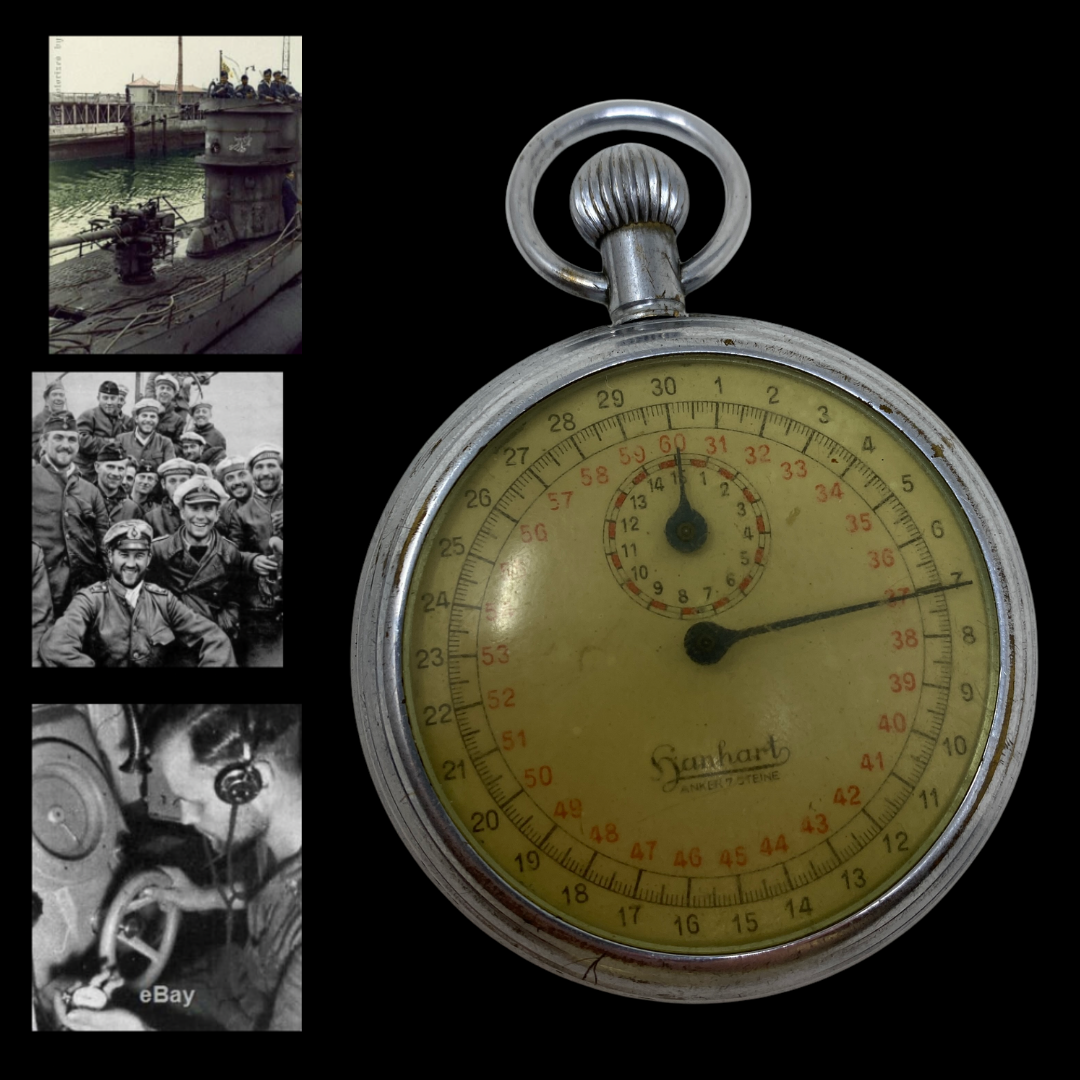

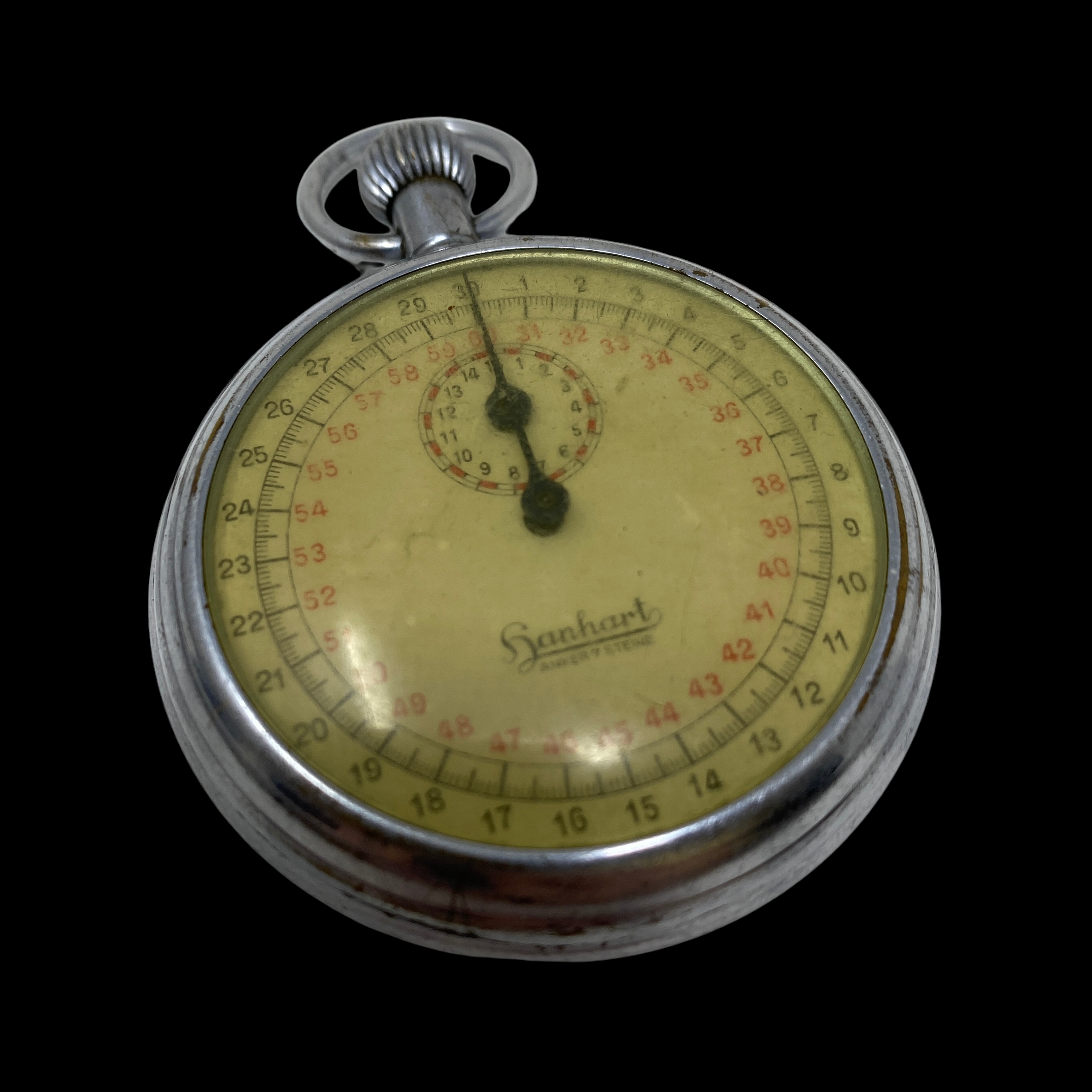
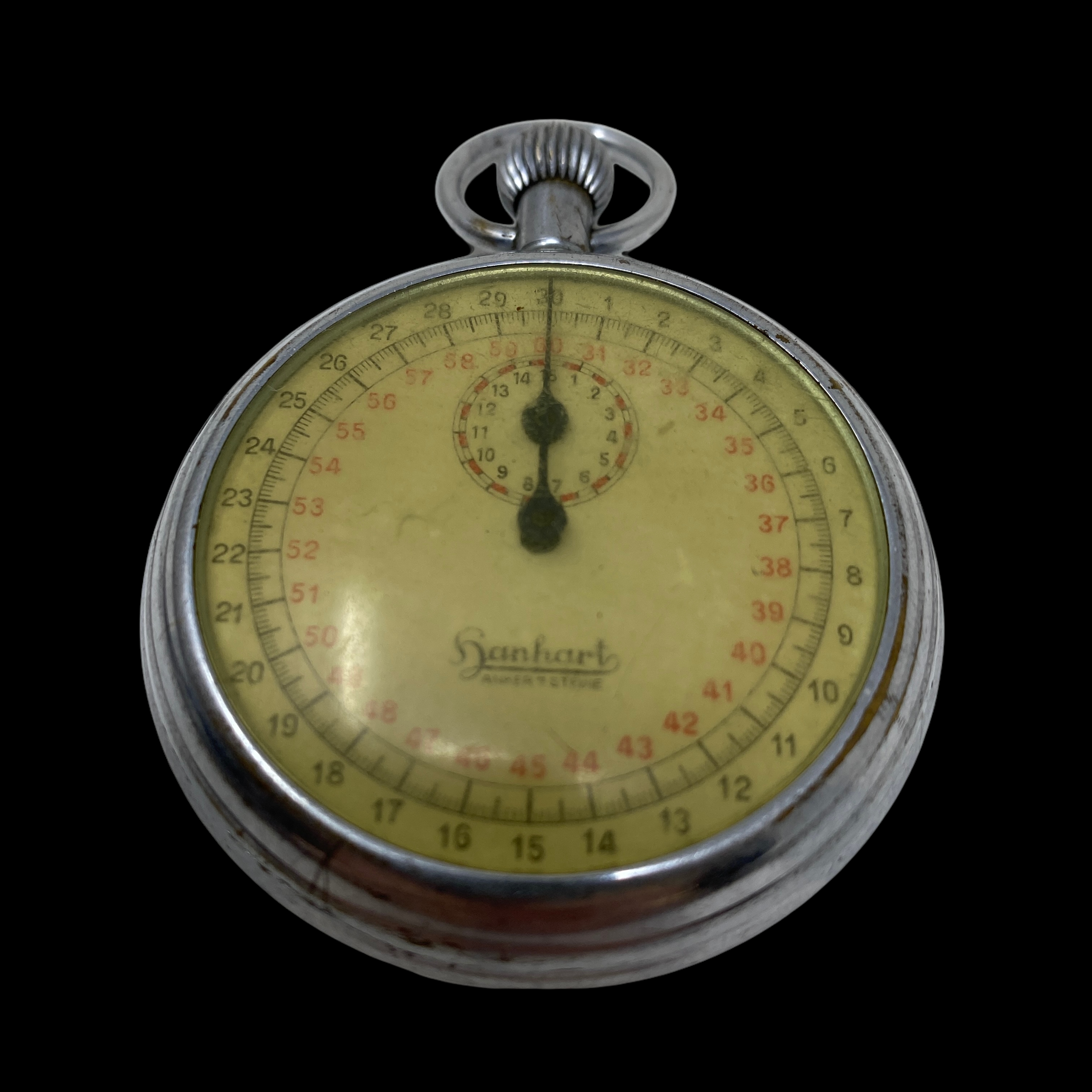
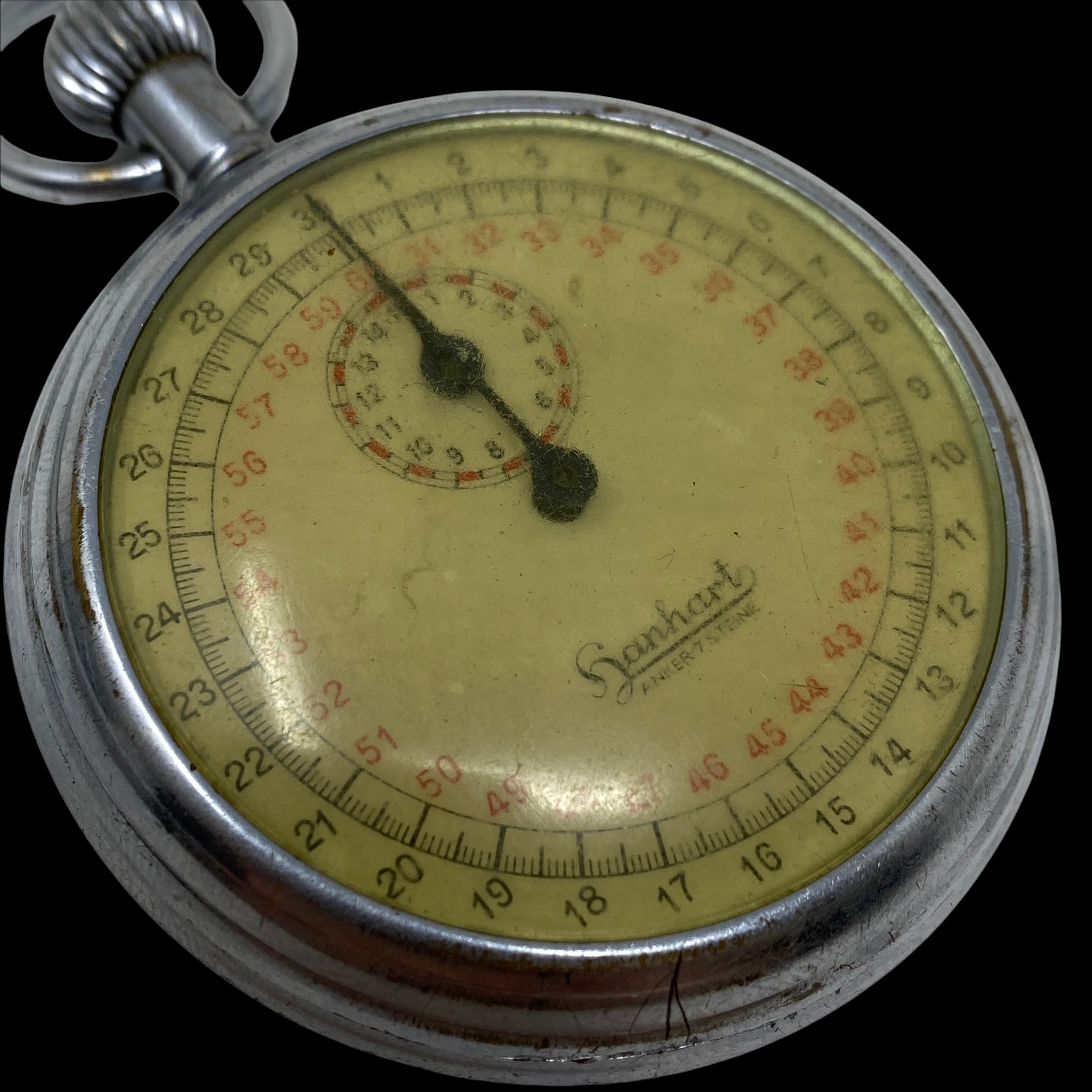
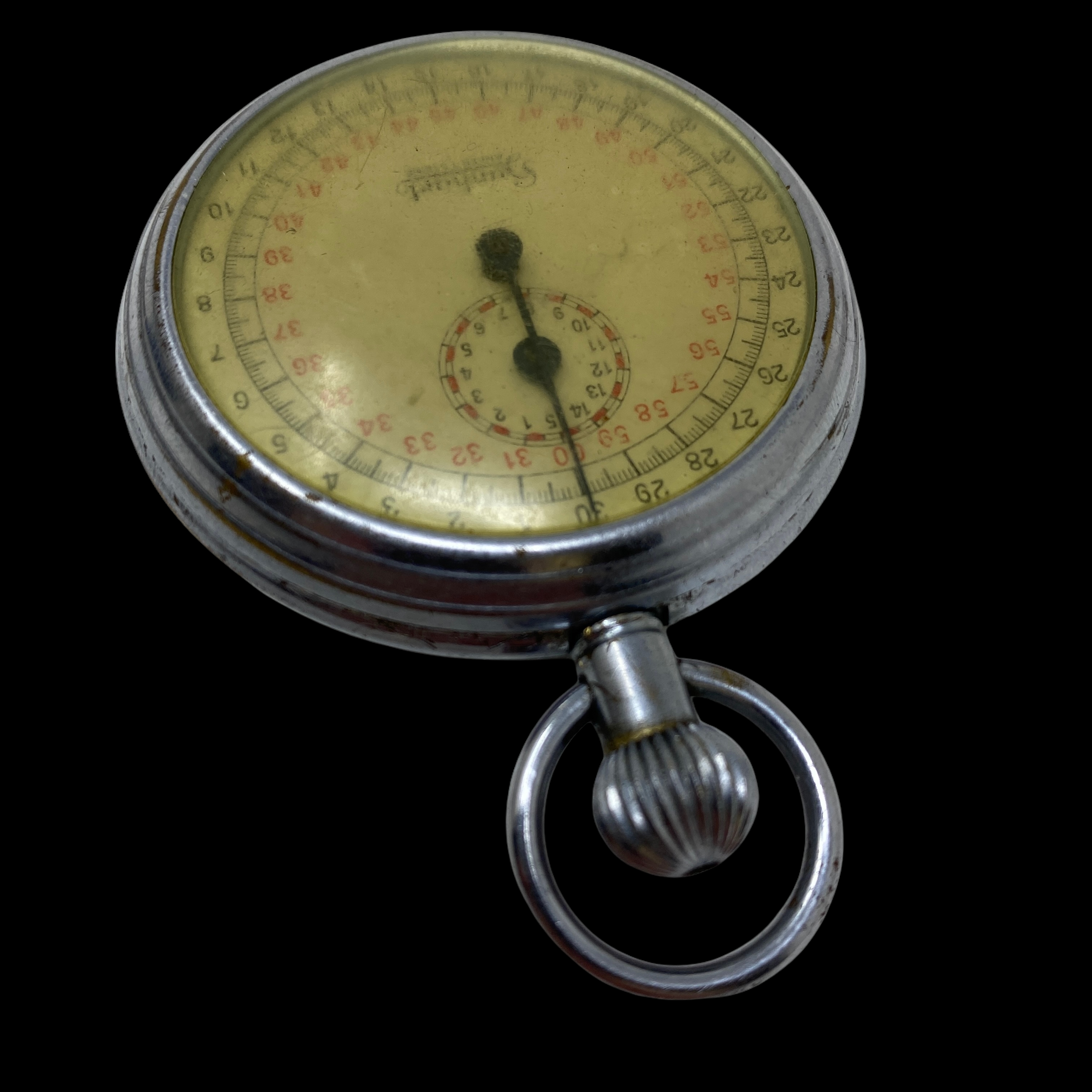
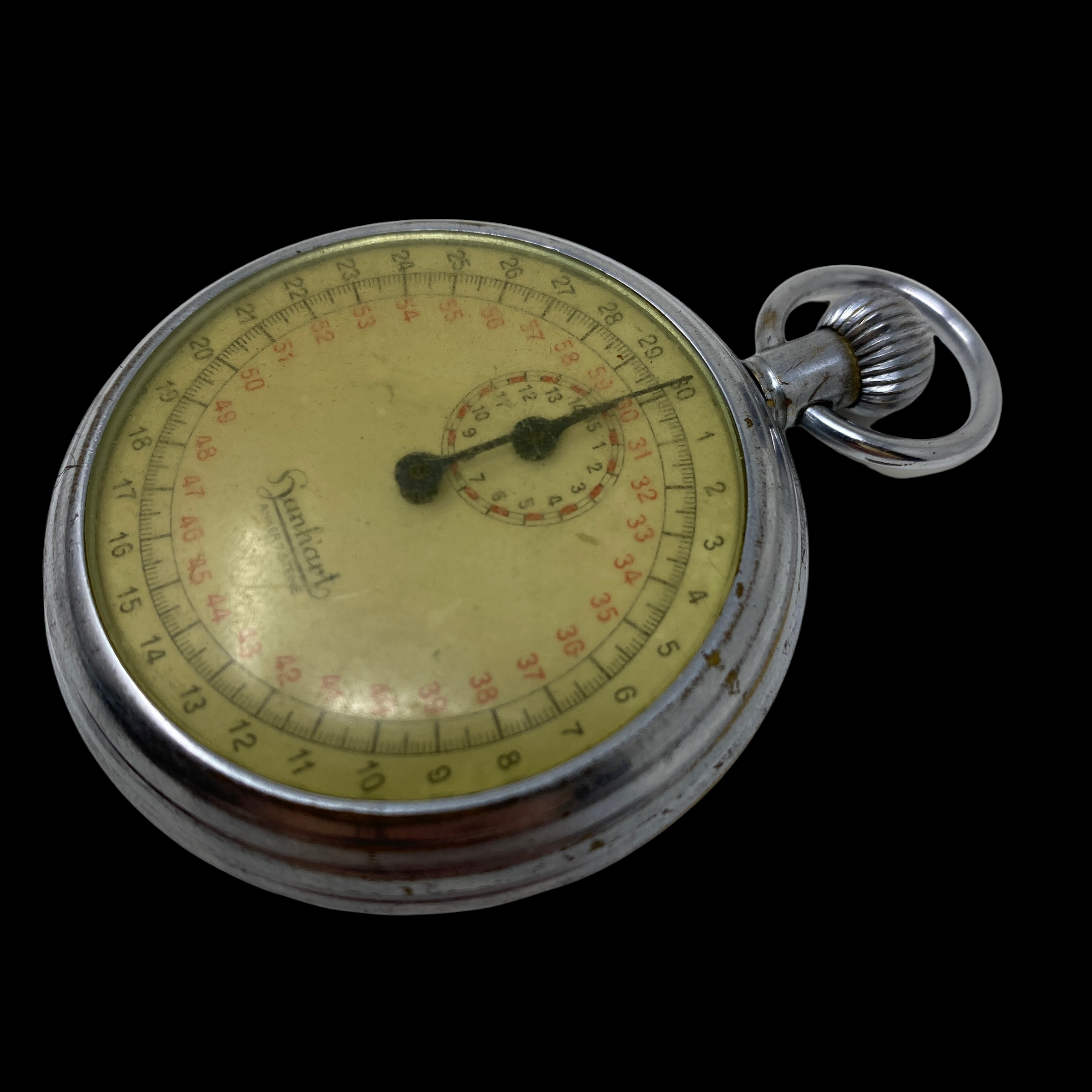
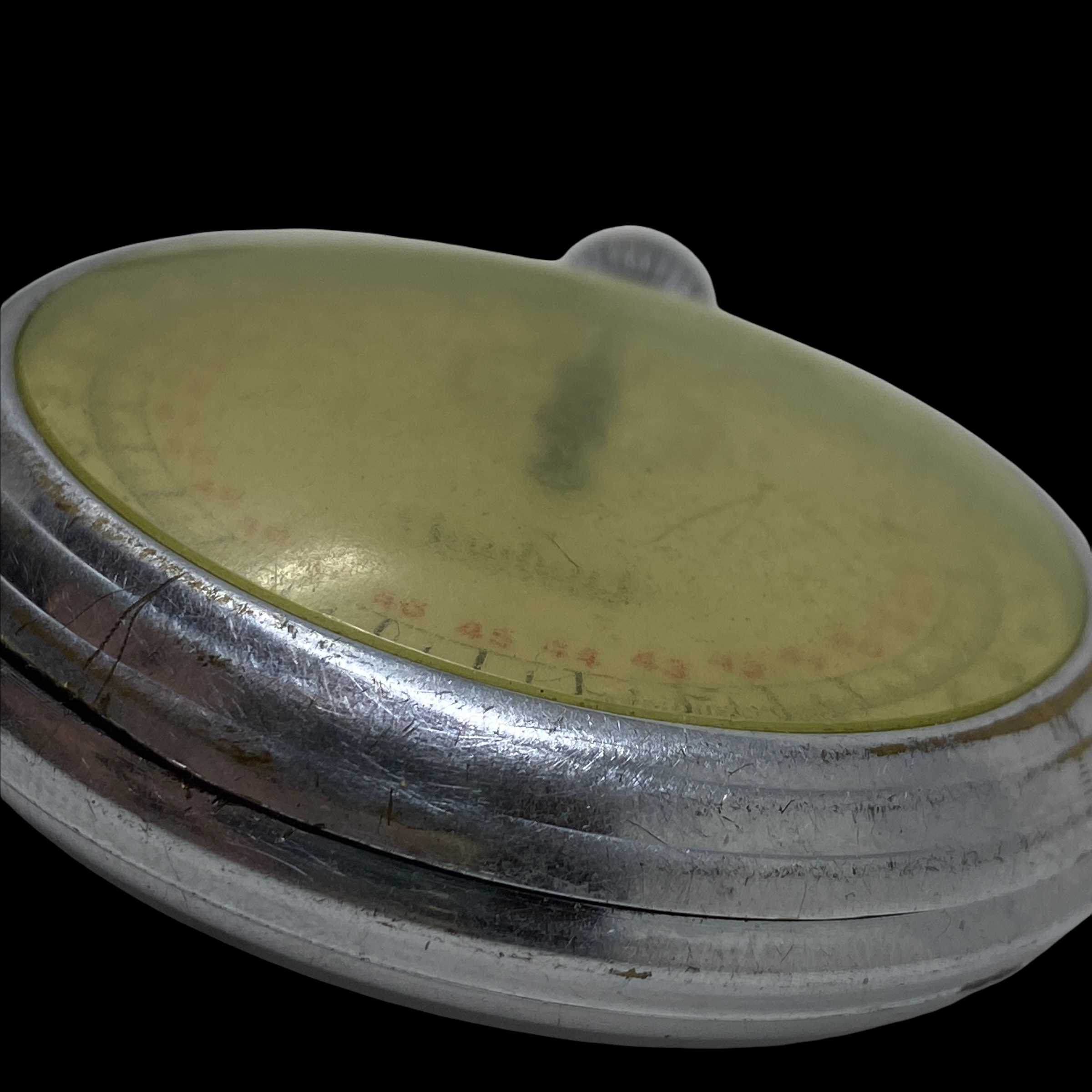

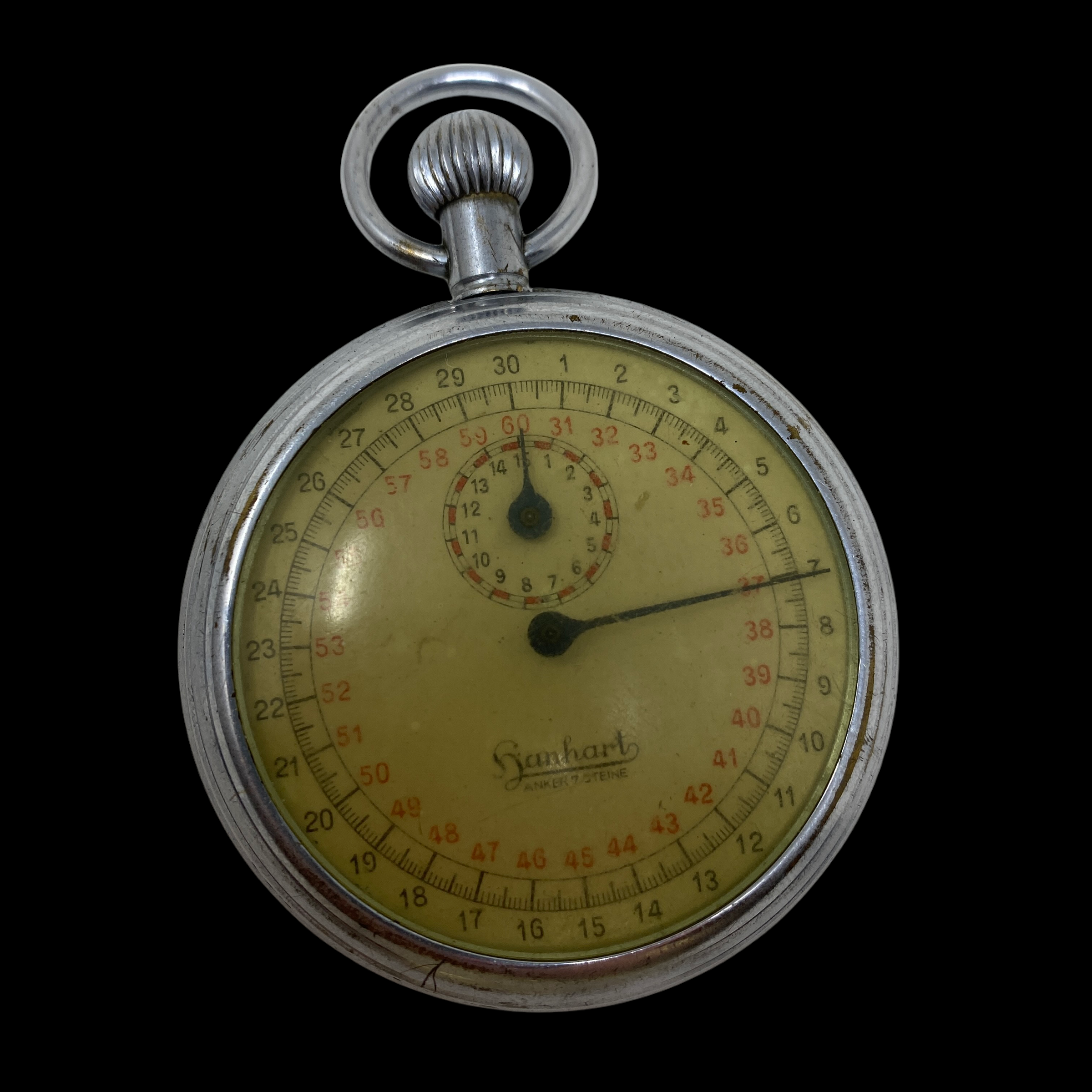
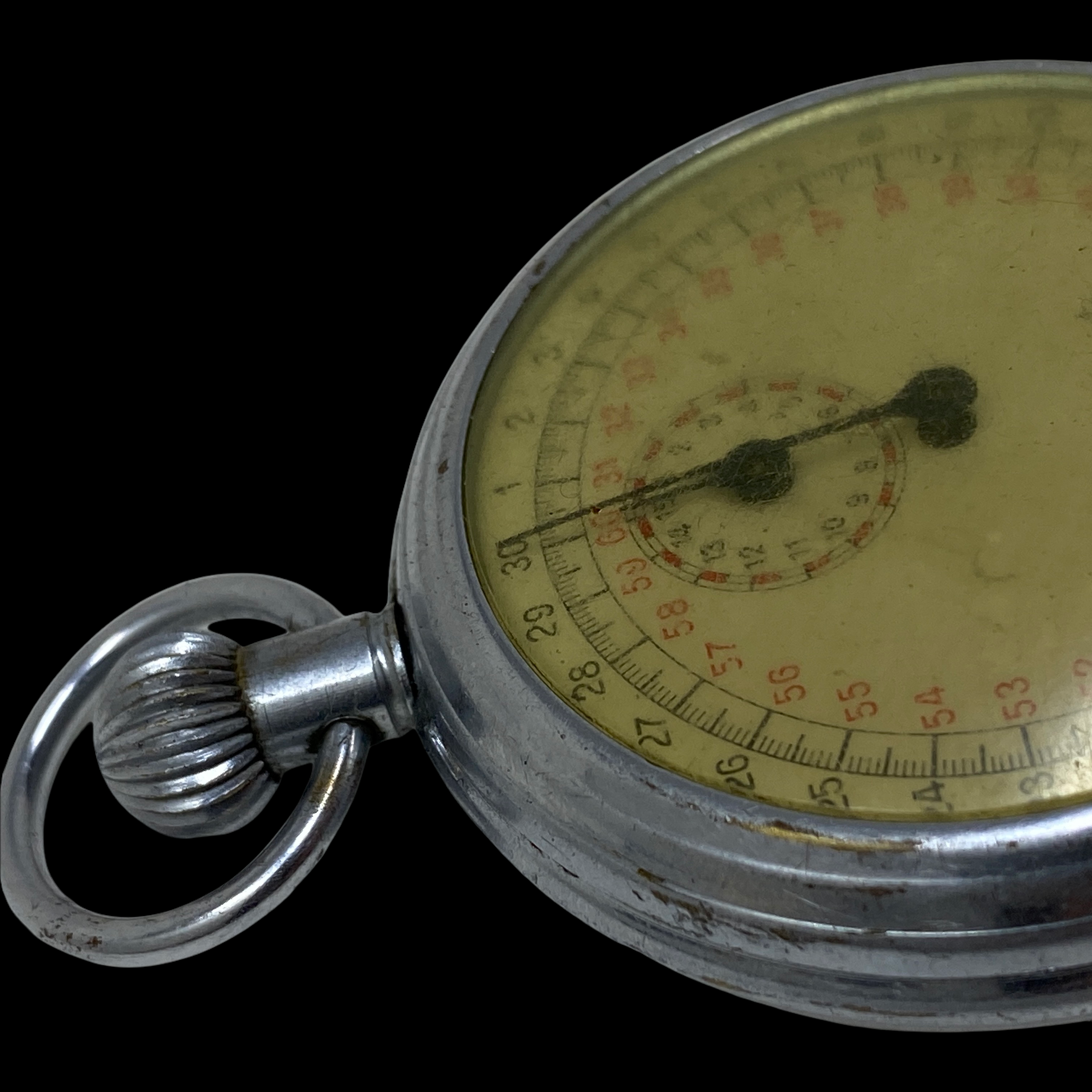
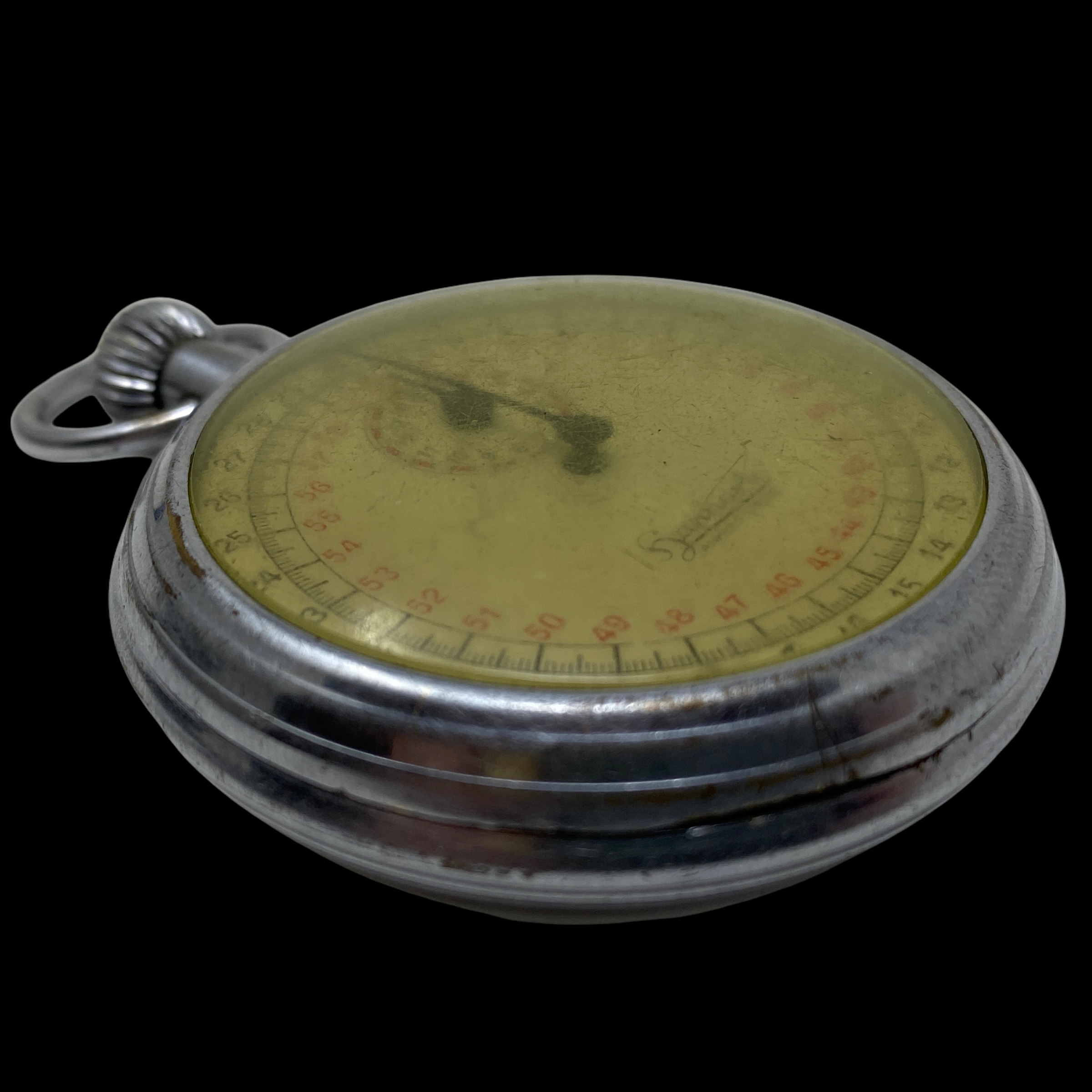
RARE WWII German Kriegsmarine U-boat Torpedo Stopwatch Timer by Hanhart
Comes with C.O.A.
Very rare original German WW2 Kriegsmarine Uboat stopwatch, made by the legendary company Hanhart. These chronometers were very important onboard the German U-Boat submarines or battleships, used when launching torpedoes and for many other tasks. Offered as found, in original condition, not cleaned or polished. Dial aged to a yellow hue with the more sought-after 30 and 60 ‘RED and BLACK’ dial. This is the classic design for German Torpedo timing and used in U-Boats and E-Boats in the North Atlantic during the first and second world wars. This WWII U-Boat stopwatch timer is in incredible condition on the outside and the timer does still function sporadically. The timer usually stops when it reaches the 1-second mark, however, the farthest the timer has gone has been 10 seconds before having to be reset. This is most likely just small loose gear on the inside. We have not tampered with the inside or disassembled it but believe the inside mirrors the great condition as well.
*When German U-Boats were captured these Hanhart timers were a VERY sought-after bring back WWII German souvenir for U.S. servicemen
The face is maker marked below center:
HANHART
ANKER 7 STEINE
U-Boats during WWII:
During World War II, U-boat warfare was the major component of the Battle of the Atlantic, which began in 1939 and ended with Germany's surrender in 1945. The Armistice of 11 November 1918 ending World War I had scuttled most of the old Imperial German Navy and the subsequent Treaty of Versailles of 1919 limited the surface navy of Germany's new Weimar Republic to only six battleships (of less than 10,000 tons each), six cruisers, and 12 destroyers. To compensate, Germany's new navy, the Kriegsmarine, developed the largest submarine fleet going into World War II. British Prime Minister Winston Churchill later wrote "The only thing that really frightened me during the war was the U-boat peril."
In the early stages of the war the U-boats were extremely effective in destroying Allied shipping due to the large gap in mid-Atlantic air cover. Cross-Atlantic trade in war supplies and food was extensive and critical for Britain's survival. The continuous action surrounding British shipping became known as the Battle of the Atlantic, as the British developed technical defences such as ASDIC and radar, and the German U-boats responded by hunting in what were called "wolfpacks" where multiple submarines would stay close together, making it easier for them to sink a specific target. Britain's vulnerable shipping situation existed until 1942, when the tides changed as the U.S. merchant marine and Navy entered the war, drastically increasing the amount of tonnage of supplies sent across the Atlantic. The combination of increased tonnage and increased naval protection of shipping convoys made it much more difficult for U-boats to make a significant dent in British shipping. Once the United States entered the war, U-boats ranged from the Atlantic coast of the United States and Canada to the Gulf of Mexico, and from the Arctic to the west and southern African coasts and even as far east as Penang. The U.S. military engaged in various tactics against German incursions in the Americas; this included military surveillance of foreign nations in Latin America, particularly in the Caribbean, to deter any local governments from supplying German U-boats.
Because speed and range were severely limited underwater while running on battery power, U-boats were required to spend most of their time surfaced running on diesel engines, diving only when attacked or for rare daytime torpedo strikes. The more ship-like hull design reflects the fact that these were primarily surface vessels that could submerge when necessary. This contrasts with the cylindrical profile of modern nuclear submarines, which are more hydrodynamic underwater (where they spend the majority of their time), but less stable on the surface. While U-boats were faster on the surface than submerged, the opposite is generally true of modern submarines. The most common U-boat attack during the early years of the war was conducted on the surface and at night. This period, before the Allied forces developed truly effective antisubmarine warfare tactics, which included convoys, was referred to by German submariners as "die glückliche Zeit" or the First Happy Time.
TORPEDOES:
The U-boats' main weapon was the torpedo, though mines and deck guns (while surfaced) were also used. By the end of the war, almost 3,000 Allied ships (175 warships; 2,825 merchant ships) were sunk by U-boat torpedoes.[19] Early German World War II torpedoes were straight runners, as opposed to the homing and pattern-running torpedoes that became available later in the war. They were fitted with one of two types of pistol triggers — impact, which detonated the warhead upon contact with a solid object, and magnetic, which detonated upon sensing a change in the magnetic field within a few meters.
One of the most effective uses of magnetic pistols would be to set the torpedo's depth to just beneath the keel of the target. The explosion under the target's keel would create a detonation shock wave, which could cause a ship's hull to rupture under the concussive water pressure. In this way, even large or heavily armored ships could be sunk or disabled with a single, well-placed hit.
Initially, the depth-keeping equipment and magnetic and contact exploders were notoriously unreliable. During the first eight months of the war torpedoes often ran at an improper depth, detonated prematurely, or failed to explode altogether—sometimes bouncing harmlessly off the hull of the target ship. This was most evident in Operation Weserübung, the invasion of Norway, where various skilled U-boat commanders failed to inflict damage on British transports and warships because of faulty torpedoes. The faults were largely due to a lack of testing. The magnetic detonator was sensitive to mechanical oscillations during the torpedo run, and to fluctuations in the Earth's magnetic field at high latitudes. These early magnetic detonators were eventually phased out, and the depth-keeping problem was solved by early 1942 with improved technology.
Later in the war, Germany developed an acoustic homing torpedo, the G7/T5. It was primarily designed to combat convoy escorts. The acoustic torpedo was designed to run straight to an arming distance of 400 m and then turn toward the loudest noise detected. This sometimes ended up being the U-boat; at least two submarines may have been sunk by their own homing torpedoes. Additionally, these torpedoes were found to be only effective against ships moving at greater than 15 knots (28 km/h). The Allies countered acoustic torpedoes with noisemaker decoys such as Foxer, FXR, CAT and Fanfare. The Germans, in turn, countered this by introducing newer and upgraded versions of the acoustic torpedoes, like the late-war G7es, and the T11. However, the T11 did not see active service.
U-boats also adopted several types of "pattern-running" torpedoes that ran straight out to a preset distance, then traveled in either a circular or ladder-like pattern. When fired at a convoy, this increased the probability of a hit if the weapon missed its primary target.